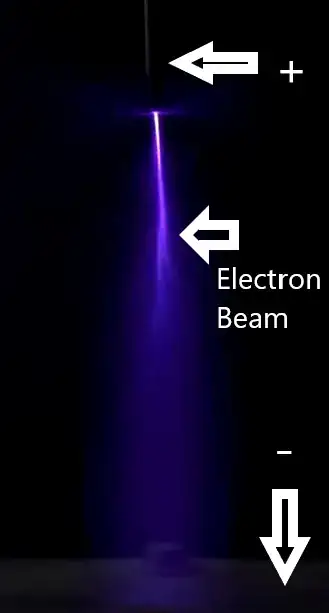Tiny bits of matter, such as electrons, are rather imperceptible, even to the well-aided eye. Just as air seems to fail to reflect light, we know it is comprised of matter and void; gases—and LOTS of space. The key to visibility is to gather matter together, such that their cumulative density and also cumulative size(not number) is greater than the size of the photobeam desired to be bounced off. Carbon Dioxide gas is essentially invisible, while dry ice and it's "fogging" are easily recognized, since the "dense cloud" has been established. However, I'm not convinced this is the proper answer to the question. Consider perhaps the electrons aren't actually offering much in the way of reflection, while our perception is actually that of the atomic nuclei reflecting light... Cathode rays, however, ARE visible—with the proper receptors, primarily because they contain energy, but, certainly are not perceptible with the limited eyes of man. At any rate, when exploring the vast reaches of microphysics, there always seem to be more questions than we actually have correct answers to. This may be by design, since there is still so much we don't know and so much to be in awe of.
